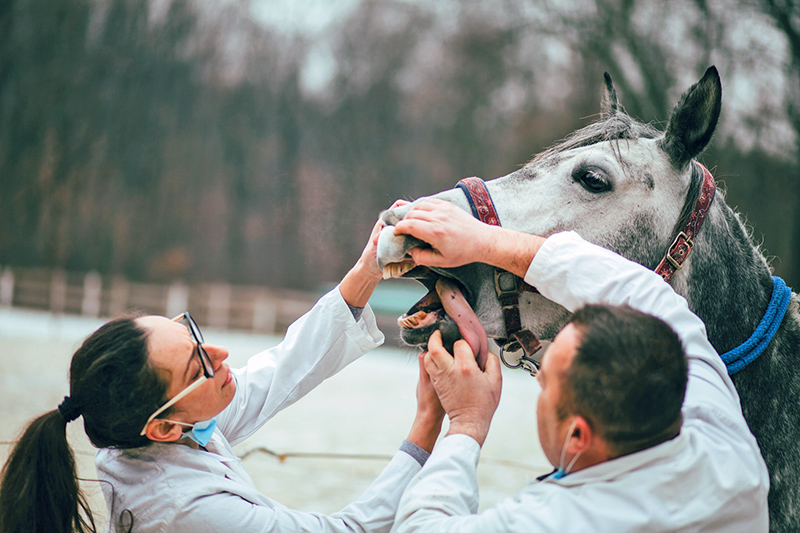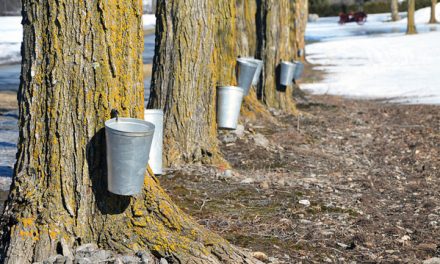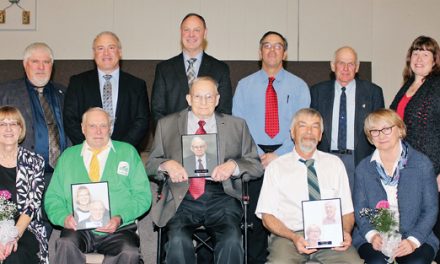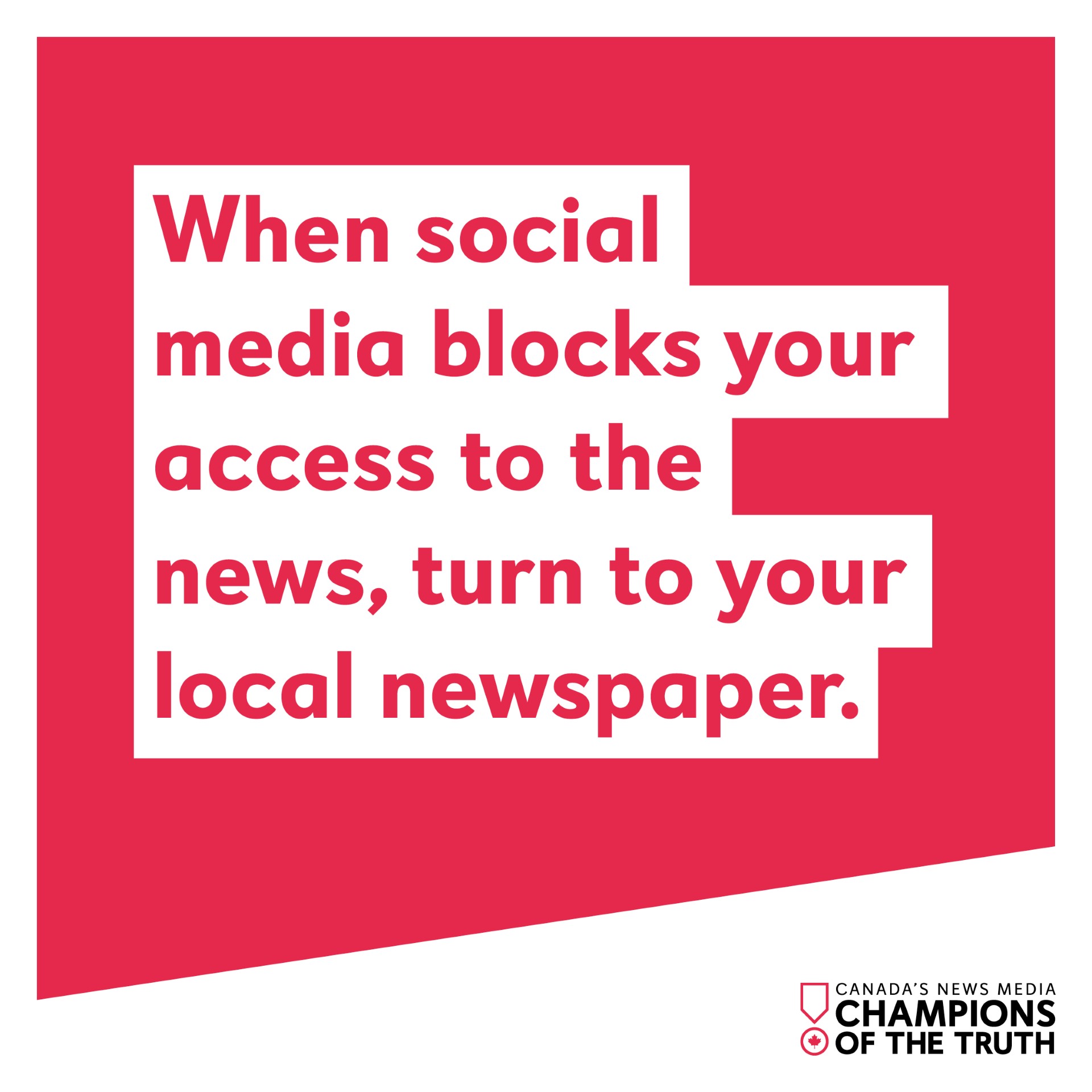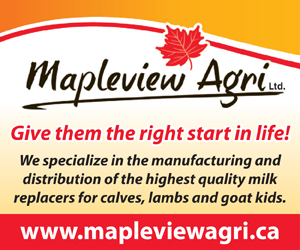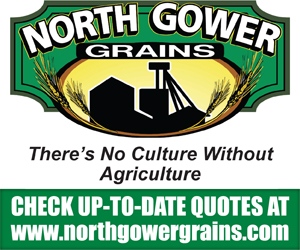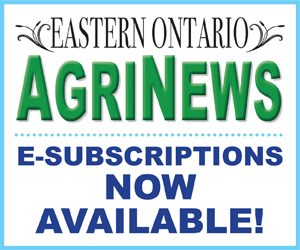By Terry Tinkess
AgriNews Staff Writer
Many people describe healthcare in Canada as being in crisis. Most, when hearing this, think of the effect it could, and is having on the people who care for those who matter most: The doctors and nurses, personal support workers and first responders who care for our family and friends.
Many, if not most, when considering this topic, would limit their concerns to those who provide human care, but a crisis also exists for those who care for our four-legged friends. Within the veterinarian team community, a crisis also exists. It’s not new, but it is getting worse.
The numbers are staggering. A report by CBC News, dated March 17, 2021 references research published in 2020 by the Ontario Veterinary College that revealed more than a quarter of Canadian veterinarians reported having suicidal thoughts in the previous 12 months. (Markus Schwabe/CBC.) This means that those in the veterinary community are almost two and a half times more likely to die by suicide than the general population.
What has caused this spike in suicides? There are a few reasons, but recent Statistics Canada study seems to indicate the Global Pandemic has played a significant role. Among adults in Canada, the prevalence of suicidal ideation (thoughts of suicide) since the pandemic began was 4.2 per cent, which was significantly higher than the pre-pandemic prevalence of 2.7 per cent in 2019.
Other reasons, however, are not new, or for that matter unique to the profession. Heavy student debt combined with the cost of setting up a practice following graduation, compassion fatigue, bullying and increased expectations from clients might be manageable on their own, but in combination would lead a reasonable person to wonder why anyone would be surprised at the current situation?
Fortunately, the existence of a problem has been recognized and steps are being taken to try and mitigate the problem and hopefully, in the future, prevent it from occurring in the first place.
Dr. Andria Jones-Bitton, D.V.M., Ph.D. is a professor in the Department of Population Medicine and the director of Well-Being Programming at the Ontario Veterinary College in Guelph. She is also the co-chair, AAVMC Academic Veterinary Wellbeing Professionals Leadership Group.
“Five years ago, I would say, is when we first began looking into veterinarian mental health, 20-15-2016”, says Jones-Bitton. “The college created this director of Well-Being Programming position right at the start of the pandemic. I accepted it about two weeks before the global pandemic hit.”
While the problem might have been acknowledged almost seven years ago, it had existed for much longer. “Both in the veterinary sector or the agricultural sector, I don’t think anyone who has been around a while is surprised at what the findings are saying, “says Jones-Bitton, “but it certainly wasn’t at the forefront of things.”
Jones-Bitton says that despite the existence of so many occupational stressors, most would be able to handle them one at a time. The problem is that each one builds on the other. “The fact that they experience so many of them simultaneously, and some of them actually conflict with their own personal values and morals, that makes a big difference.”
The early waves of the pandemic saw increases in the “pandemic puppies” and the “Covid kittens” as people, now working from home, saw an opportunity to bring a pet into their home. However, at the same time there were lockdowns, public health restrictions and then veterinary staff shortages with people being either ill or not wanting to be in the clinic, which put extra pressure on the veterinary team. “I’m not sure if you’ve noticed,” says Jones-Bitton, “but people seem to be losing some of their “grace.”
“They are taking their frustrations out on the veterinary team, you know, further exacerbating issues. We had a population that was already overworked, with long working hours, a strong human/animal bond and then you add in more overwork, staff shortages and people not being as patient or as kind as they might normally be, it definitely exacerbated the issues.”
In an agricultural context, there is the added wrinkle of economic loss. People love their pets, there is little doubt of that, but when you have a potentially large investment in livestock, having someone tell you that this asset must be disposed of, or requires an expensive form of treatment with no guarantee of a beneficial result, that adds additional stress to the client as well as the veterinarian who is the bearer of bad news.
Yes, I can confirm that anecdotally,” says Jones-Bitton. “Most of our research, because of sheer numbers has tended to involve more small animal veterinarians. We also have a research program on farmers, and they are experiencing many of the same stressors that veterinarians experience plus some unique ones of their own.
“When things go wrong on a farm, yes there is a tie to the animal, but there is also a tie to the business, so yes, sometimes the vets are on the receiving end of that.”
As the human-animal bond has strengthened, and pets have become a member of the family, client expectations have also risen. “Many people expect the same level of care that human care provides but they might not be willing to pay for it,” says Jones-Bitton. “Some can modify their plans, and some take that frustration out on the veterinary team.
“It has been 20 years since I’ve been in practice, but I still remember very vividly things that clients have said to me, like only being in it for the money, only caring about the money, why aren’t you helping my animal, you’re supposed to love animals. That hits to the core.”
Imagine having to euthanize a relatively healthy animal because the owner won’t or can’t pay for treatment?
“Client expectations increase, we demand more, clients may not be willing to pay for it, or be unable to pay for it” says Jones-Bitton “and that can be really difficult as well because now the veterinarian is left in a situation where they know the pet is going to continue suffering, or they need to face euthanasia.”
Program changes
Help is available from several sources and change is happening, but it takes time. Prevention rather than mitigation would seem to be the most suitable approach.
“I am an epidemiologist, and we talk about the upstream versus downstream approach,” says Jones-Bitton. “The analogy is that people are falling into a river and bodies are washing up on shore so we build hospitals downstream, and we get rescue boats downstream and we focus on saving who we can, but really it is all about taking a walk upstream and finding out what we can about why are they falling into the river in the first place and what can we do to prevent that?
In Guelph, prevention training starts early. In the first year of the four-year program there are about 13 hours where they cover things like mental health literacy, emotional intelligence, and conflict management. “I teach thinking traps and cognitive reframing, you know, so when we have thoughts that aren’t very helpful, or are inaccurate, how can we actually analyze those thoughts and rework them into something more accurate and more useful,” says Jones-Bitton.
In the fourth and final year of the program she delivers an intensive, one-week elective where students receive about 35 hours of training and explore further positive psychology concepts, well-being strategies, well-being training, team bonding and leadership. “We’re trying to prepare students to better withstand some of the stressors that they face in practice when they get out.
Subject to approval by the Curriculum Committee, the goal is to create wellbeing curriculum for all four years of the program. It is not just the students though, who receive training.
“We’re also looking at the wellbeing of our employees at the Ontario Veterinary College as well. We’re recognizing that we are an ecosystem, and our wellbeing affects each other,” says Jones-Bitton.
“That’s a big part of what we are doing right now, taking that walk upstream and seeing how we can prevent some of these issues and how can we train people to be better able to work through them when they arise.”
The Vet Perspective
Rachel (not her real name) is a vet who works in a mixed animal clinic. She says that the stresses experienced change as your career progresses. “Coming out of school during your initial years you are definitely more stressed about the giant learning curve and being on your own,” says Rachel. “As time goes on, these stressors slowly improve but they change into others. The financial pressures of student debt and now for me especially (getting into) the housing market has been extremely difficult to settle and find security,” acknowledging that some stresses are self-imposed. “We definitely put a lot of pressure on ourselves to achieve big goals and I think part of that comes from the general personality of people who get through vet school.”
According to Rachel, there is also the loss of a support system that occurs when school days end. “They talk a lot about stress and mental health in school, but I personally felt a lot of that security and support disappeared when I left. It can be especially hard for vets in more rural areas to access mentorship and support. Although mental help may only be a phone call away, sometimes when you are extremely overwhelmed by everything in life, even a simple phone call or email seems like too much effort and often gets put off.
“Many veterinarians also have the type of personality that finds it difficult to ask for help or feel like they have failed by doing so. We work so hard and make a lot of sacrifices to go to vet school, yet it can be very discouraging when you don’t get to enjoy your dream job or don’t get the satisfaction you were expecting.”
The type of work you do, small or large animals, also plays a role, although Rachel says there are issues with each. “I definitely prefer to work with farm clients and it is the reason why I entered the industry,” she says. “However, as a herd veterinarian you take a lot of responsibility, especially when things go wrong. Many producers can be extremely helpful when it comes to dealing with difficult situations such as calving which is especially important for me as a small female large animal vet but there are still some producers who leave it up to the vet to do everything.
“There is nothing worse than showing up to a disaster calving where the vet should have been called out 12-24 hours earlier but yet the producer gets mad when there is a poor outcome, especially when they receive the bill.”
“I find the financial aspect of veterinary care more of an issue on the small animal side,” she adds. “We are very fortunate to not pay for medical care here in Ontario and I feel that many people don’t understand the cost of medical care. Small animal clients are especially prone to blaming vets for costs of medical care and accuse us of only being here for the money. It is also frustrating when clients expect the same level of medical care as people receive without a general rural practice having the resources available. It is particularly hard to euthanize pets due to financial restrictions.”
The pandemic, according to Rachel, has made the situation worse in a few ways. Staff shortages in all areas create backlogs, meaning that sometimes people need to wait longer than they expected for care. “I understand people’s frustration when they have to wait for an appointment but at the same time, we are doing the best that we can with limited staff.”
In terms of coping, Rachel says she does what she can, but it isn’t easy, although being active helps. “I find being active helps a lot but extremely difficult when you come home from work mentally and physically exhausted. Separating home from work life is also important but difficult when you are on call or have large animal clients with your personal phone number.”
Trying to remember the bright spots also helps. “I try to keep cards or notes from clients to remind me of the grateful people especially when you have had to deal with a particularly nasty person,” says Rachel. “It’s always nice when clients take a moment to show their appreciation. Unfortunately, it can take several days or weeks to get over one bad experience or unpleasant encounter with a client. We are here to provide a service and would appreciate a little kindness and understanding in return.”
Suicide could be described as a killer who hides in plain sight, always there, lurking and waiting for just the right moment, for the right trigger, before acting. Despite great efforts to bring mental health issues out of the shadows, there is still, for many a stigma attached to acknowledging “the problem.” As Rachel mentioned, for many asking for help, is akin to admitting failure, which is difficult when you have invested so much of yourself in building your dream career.
If, however you don’t acknowledge there is a problem, it is difficult to obtain assistance. It is real, the problems do exist, but this is often only acknowledged when tragedy strikes, as it did recently for a young, Eastern Ontario Veterinarian who, despite seeming to have everything to live for, took her own life.
Help is available
Sometimes the most difficult thing can be opening up to those who are close to you, in which case a good listener, one who understands your situation maybe as well as you do, could be the answer.
Not One More Vet (NOMV) is a registered charity based in San Francisco, California. It was formed in October 2014 following the death of world-renowned Veterinarian Dr. Sophia Yin. A Facebook group was formed to discuss all aspects of veterinary life and it grew beyond all expectations. It currently has 26,000 members world-wide. It has grown into a non-profit organization which provides education, support and resources for veterinary professionals and students around the world.
NOMV also acts as a sort of general repository for information for other groups from around the world who can help. Their mission statement is NEVER ALONE, stressing that there is always someone who understands what you are going through and is prepared to help.
You can learn more about NOMV by visiting their website (nomv.org) or looking for them on social media as they are active on most major platforms.
Another group worth considering is The Shanti Project (shanti.org). Their veterinary health initative was founded in 2021 “…because veterinarians and veterinary technicians are currently an underserved population with regards to mental health care and support.”
According to their website, they have engaged with more than 200 veterinarians and veterinary technicians from across the U.S. and Canada. For more information, please contact Dr. Katie Lawlor at klawlor@shanti.org.
At some point in time, we all could use a little help, a bit of understanding and perhaps for someone to show just a bit of kindness. People who provide such a vital service, as veterinarians do deserve this as much an anyone, as well as just a bit of respect.

